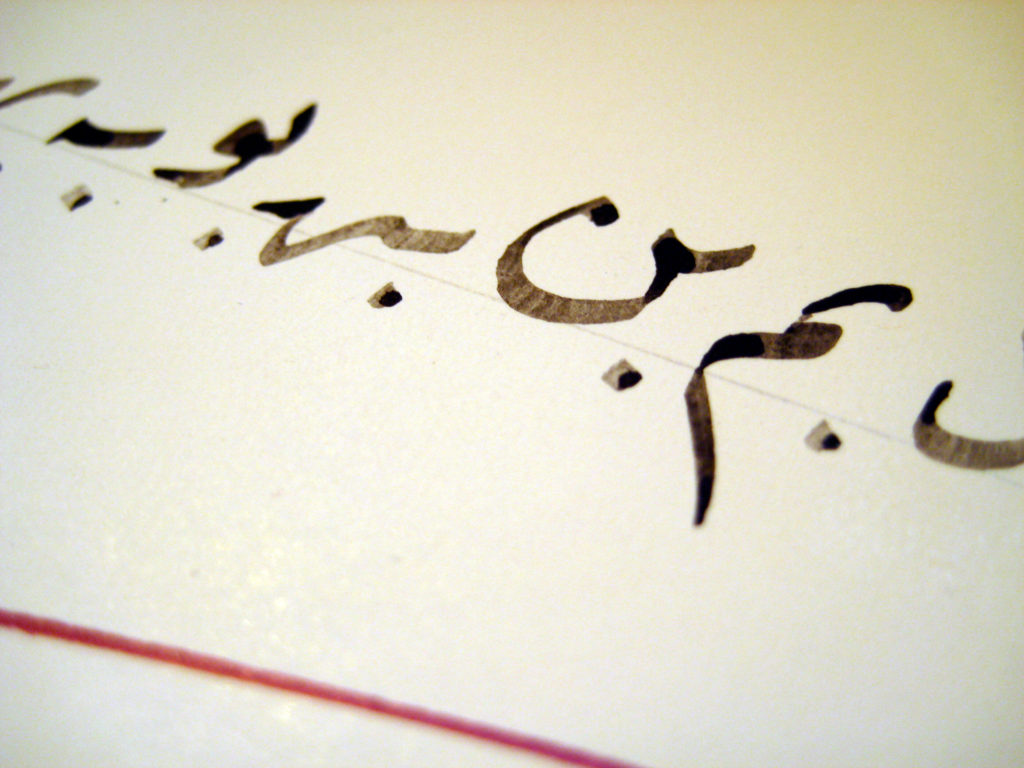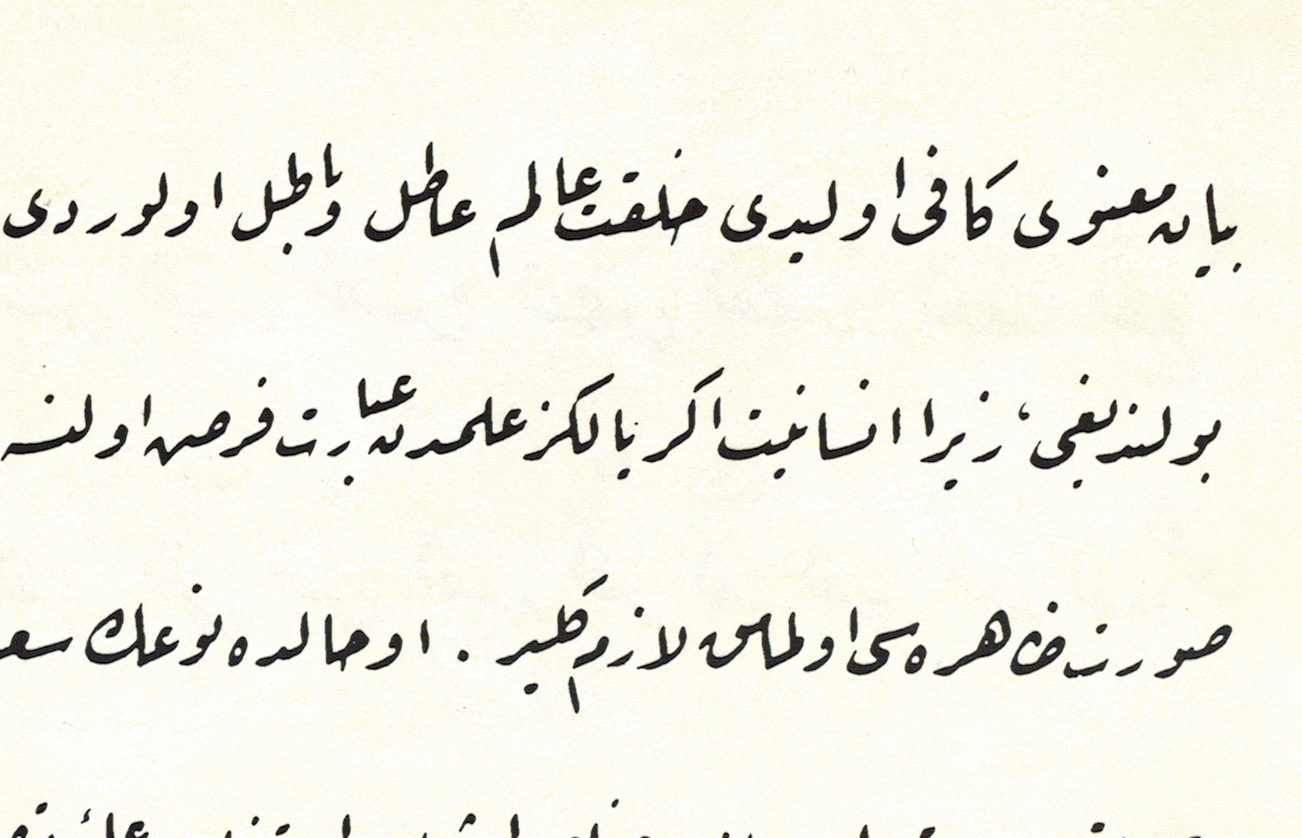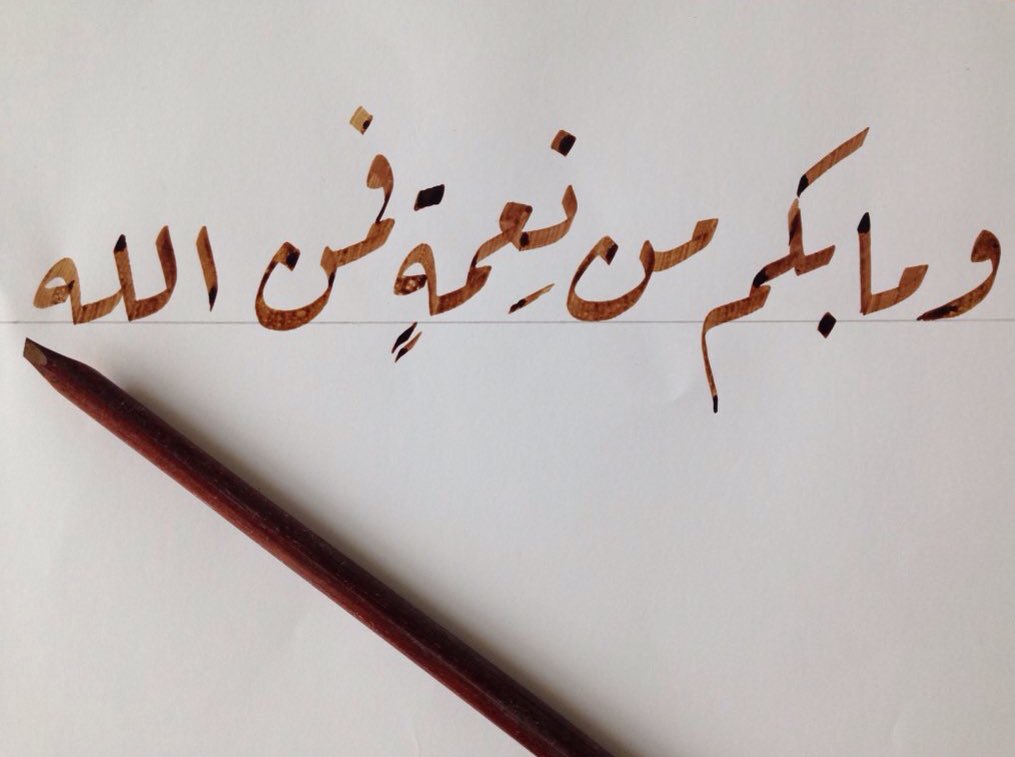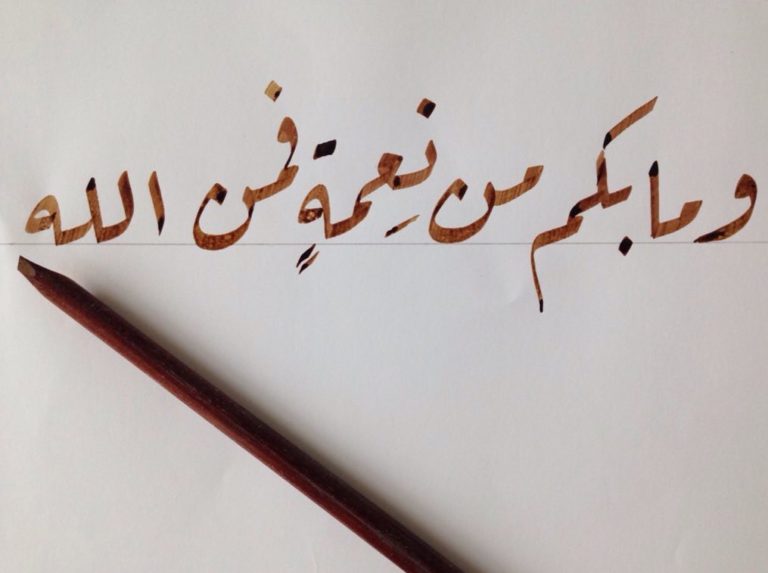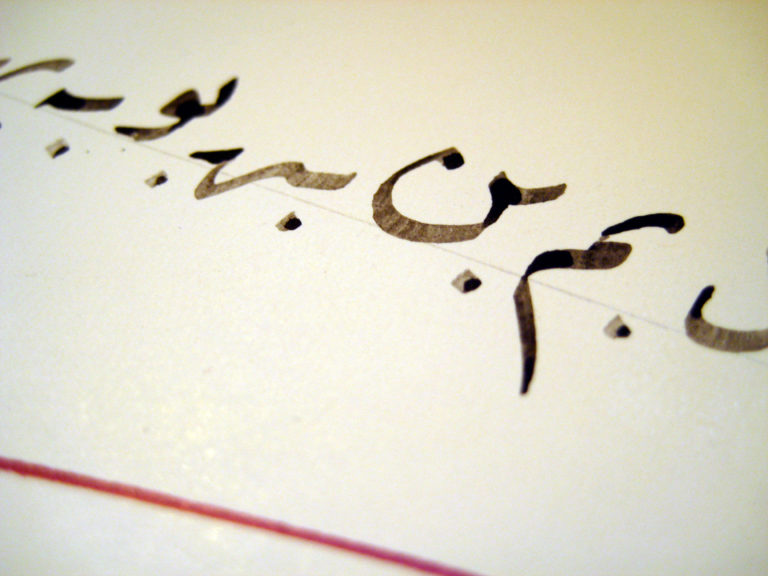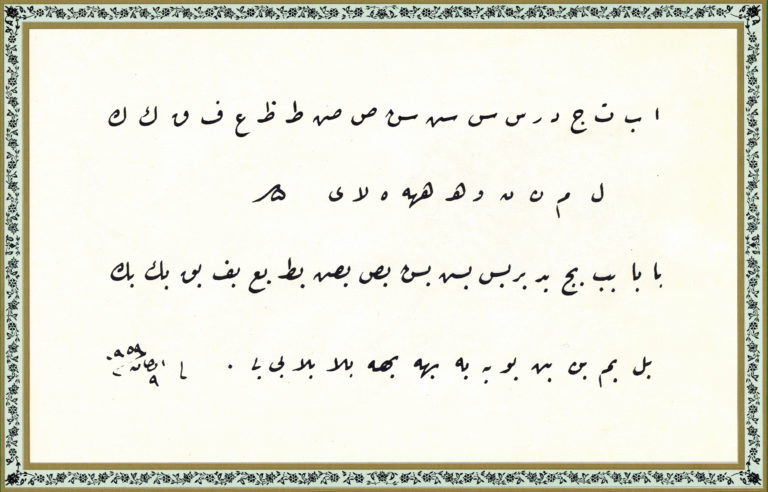Ruq‘ah
(Pronounced “ruk-ah”; Turkish–Rik‘a; Persian–Riq‘a).
Note on this name: we are using the name ruq‘ah to describe this script, in order to differentiate it from the not-related script, riqa‘)
Meaning
- “Ruq‘ah” is derived from the noun ruq’a, meaning “a patch or piece of cloth” because it was written on small scraps of paper
Uses
- Originally devised to write Turkish for the late Ottoman bureauocracy
- Used broadly across the Arab and Ottoman world for personal correspondence and handwriting
Timeline
- Developed in second half of 18th century
- Still in use today
Distinctive characteristics
- A simplification of the divani script constructed from short strokes
- Letters are more straight than rounded
Notes
- Easier to learn and write than other scripts. Good script for beginners.
